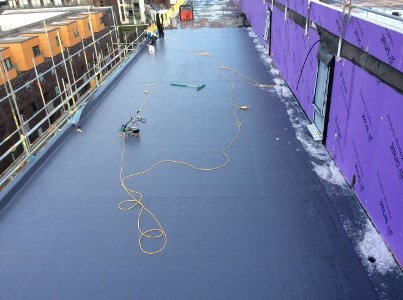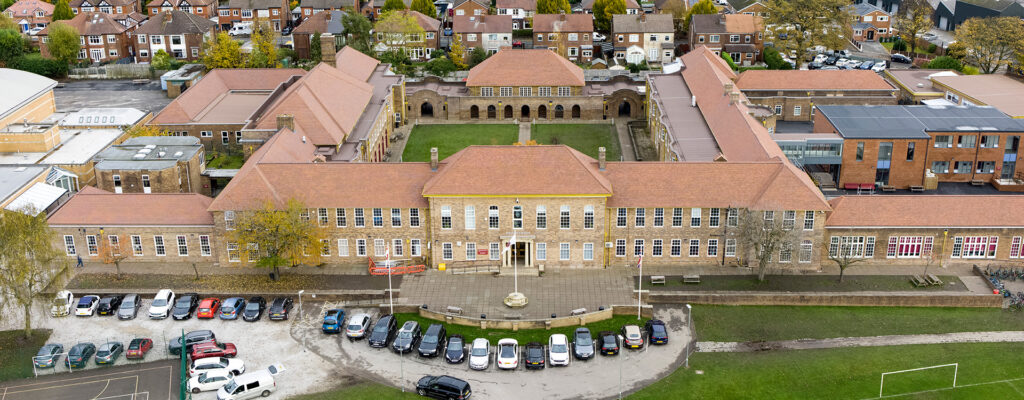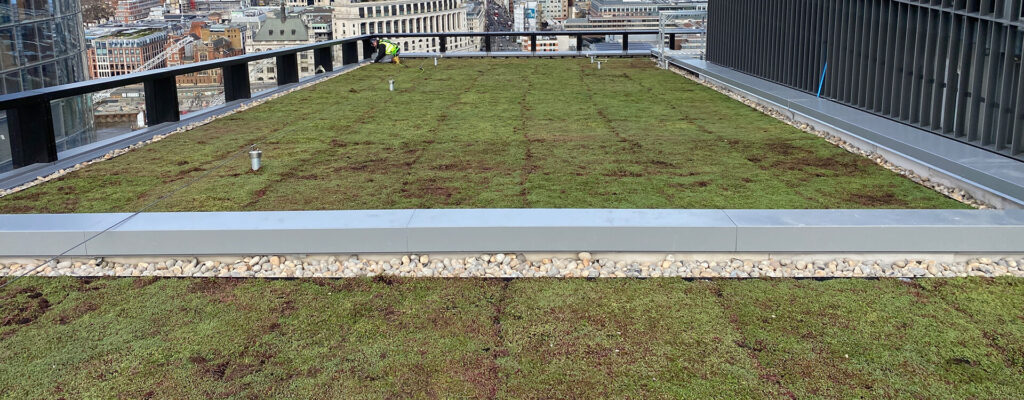Single ply flat roofing systems should not be installed in adverse weather conditions. While British weather can be unpredictable, working in the best possible conditions improves quality and avoids corner cutting or poor practice.
Substrates are typically expected to be clean and dry, making wet weather work undesirable. Materials should be protected from rain as much as possible and should not be installed following excessive or prolonged exposure to moisture. Ancillary products such as primers, adhesives and sealants generally have a +5Cº operating limit, restricting their use in colder months.
The health and safety of roof operatives should be taken into account when thinking about conditions in which a flat roof system is installed. Strong winds, icy conditions or heavy rain all present potential hazards for installers.

How does temperature affect single ply membrane installation?
Fixings are not temperature sensitive unlike adhesives, so a mechanically fastened roof system may be more suitable in areas of unpredictable weather.
Extremes of temperature affect the performance of adhesives, and installers should take that into account accordingly. In warm weather, they activate faster, reducing the time available to lay the waterproofing membrane. In cold weather, they take longer to activate and the temptation may be to work at normal speeds, resulting in a poor bond between adhesive and covering.
IKO Polymeric’s IKOpro PUMA Zero is a two-part polyurethane adhesive, suitable for use at temperatures as low as 0°C. As well as being compatible with fleece-backed single ply membranes, it can also be used to adhere thermal insulation.



